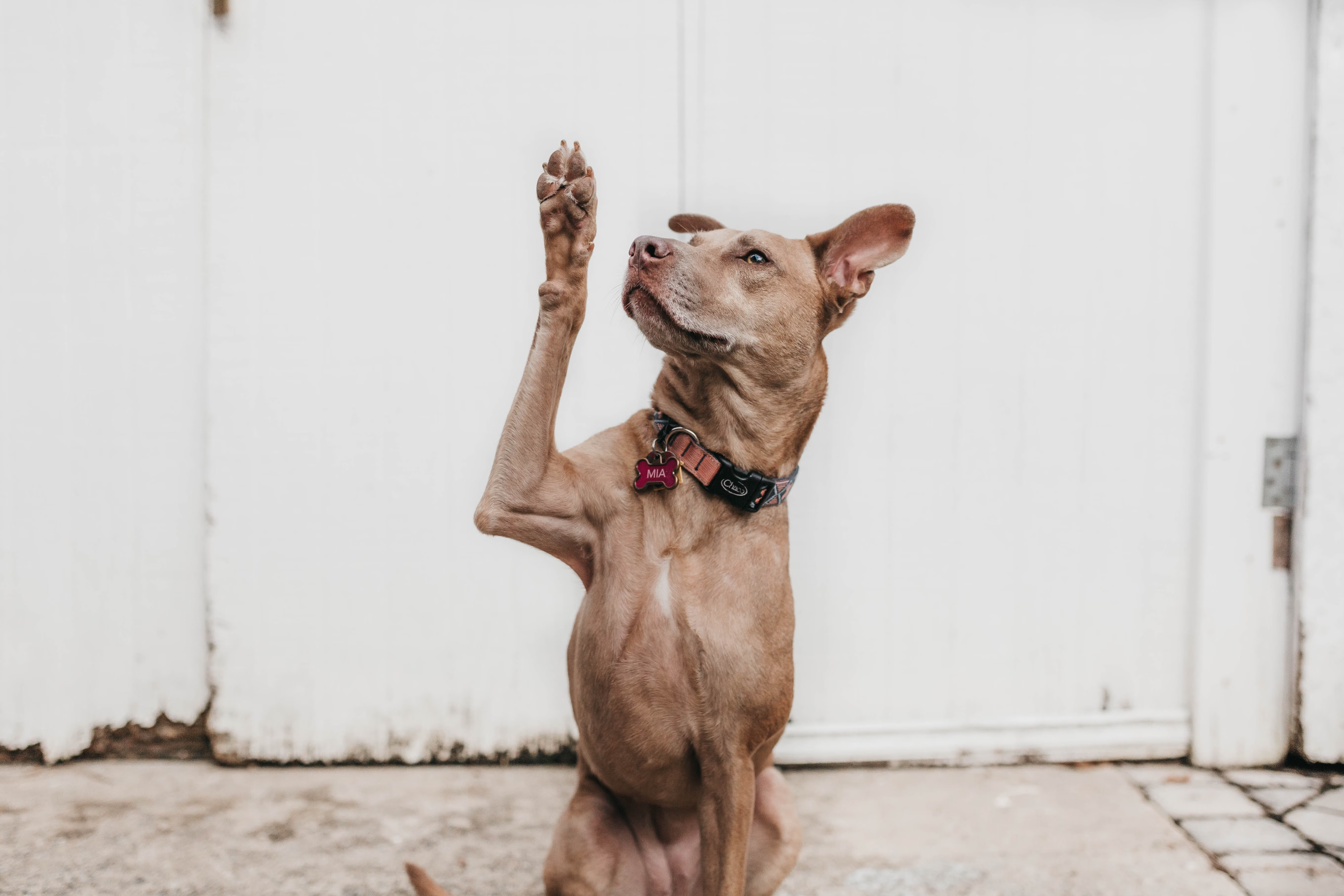As humans, we live in a right-handed world. That’s because studies show a whopping 90% of people are right-handed. As a pet parent, you’ve probably wondered if dogs skew similarly right-pawed—or if they show a preference at all. So we dug into the latest findings on paw preference and what it may (or may not) mean for your four-legged friend.
An overview of lateralization
Before we dive into paw preference, it’s helpful to take a step back and talk about brain lateralization. In a lateralized brain, the right and left hemispheres of the brain specialize in different functions or processes. In humans, the left side of the brain is associated with speech and language processing, abstract thinking, and movement of the right side of the body. The right side of the brain is associated with image processing, spatial thinking, all types of emotions, and movement in the left side of the body. Therefore, if you are a right brain-dominated person, you may be stronger in the functions and processes associated with that hemisphere of the brain, and vice versa. However, recent research has shown that the common belief that left-handed people are more creative, and right-handed people are more analytical is based on outdated research, and the truth is much more nuanced.
Lateralization is widespread in the animal kingdom and can come in quite handy. For example, it’s the brain’s ability to do two different things at once that allow an animal to search for food while simultaneously remaining vigilant against predators.
But what does all of this have to do with paw preference? It generally holds true that a person’s hand preference is opposite their dominant brain hemisphere. Meaning, right-handed people are often left-brain dominant, and vice versa. If the same holds true for dogs, it could provide a window into their personality and ways of thinking. cognitive abilities.
Current research on paw preference
Researchers have conducted several studies on paw preference, though the results have varied. In a recent large-scale study, researchers found that of the nearly 18,000 dogs in the sample set, 74% showed a distinct paw preference. Of that 74%, the majority of dogs did indicate a right-paw preference. However, that preference was not nearly as dominant in dogs as in humans, with 58.3% showing a right paw preference and 41.7% indicating a left paw preference. Data from the study also showed a potential link between paw preference, sex, and age. Based on the owner-reported findings, female and senior dogs showed a stronger right-paw preference than male and younger dogs.
And still, other studies have called into question the existence of a true paw preference. For example, a study published in 2018 questioned whether a dog’s use of their right or left paw might vary based on the task, rather than being a universal preference, which seems to be true in people as well. The study did suggest that paw preference is stable over time.
The bottom line: the debate is ongoing, and more research is needed. However, that doesn’t mean you can’t run a few experiments of your own to see if you can detect a paw preference in your dog.

How to determine your dog’s paw preference
Taking a page from scientific studies, you can identify your dog’s paw preference in a few ways:
- Kong test. Start by stuffing a Kong (or another similarly-shaped food puzzle) with your pup’s favorite treats. Next, place the Kong on the ground in front of your dog and pay attention to which paw they use to hold the Kong in place while trying to retrieve the treats.
- First step test. Observe which paw your dog uses to start actions like climbing stairs or stepping over an object.
- “Give a paw” test. Use the "give paw" command to see which paw they consistently offer.
- Tape test. Place a small piece of scotch tape on the bridge of your dog’s nose and see which paw they use to remove the sticky object.
If your dog appears to use both paws equally, they may be ambilateral and not have a strong paw preference. Or, you may observe that their paw choice depends on the task they are attempting to complete.
What does a paw preference mean for your dog?
Knowing your dog’s paw preference may be more than just a fun fact. Researchers have explored whether a dog’s paw preference tells us something about their emotions and behaviors. The potential link is rooted in the understanding that the tendency to use the left side of the body indicates more activity in the right hemisphere of the brain—which processes emotions such as sadness and fear—while the use of the right side of the body activates the left hemisphere of the brain—which promotes exploration. For example, in humans, ambidextrous individuals are more likely to suffer from PTSD, schizophrenia, and psychosis, and in non-human primates, left-handed individuals tend to be more fearful and reactive. Again, studies have been conflicting, and vary significantly in their design and in dogs studies, but two studies—one looking at a connection to behavior issues and one exploring a dog’s emotionality—found little evidence to support a correlation between a dog’s temperament and behavior and their paw preference.
However, other research has suggested a relationship between paw preference and behavior. For instance, one study found that dogs without a paw preference were more reactive to loud noises such as fireworks and thunderstorms. And another study found that dogs with a paw preference (particularly a left-paw preference) were slightly more likely than ambilateral dogs to display aggression toward strangers. But researchers have just begun to scratch the surface on this topic and further studies are needed before conclusive results can be reached.
What does all of this mean for you as a pet parent? Here at Wisdom, we believe the more you understand about your pet, the more meaningfully you can bond and live your happiest lives together. And identifying your pup’s paw preference is one more way to know your whole pet.














